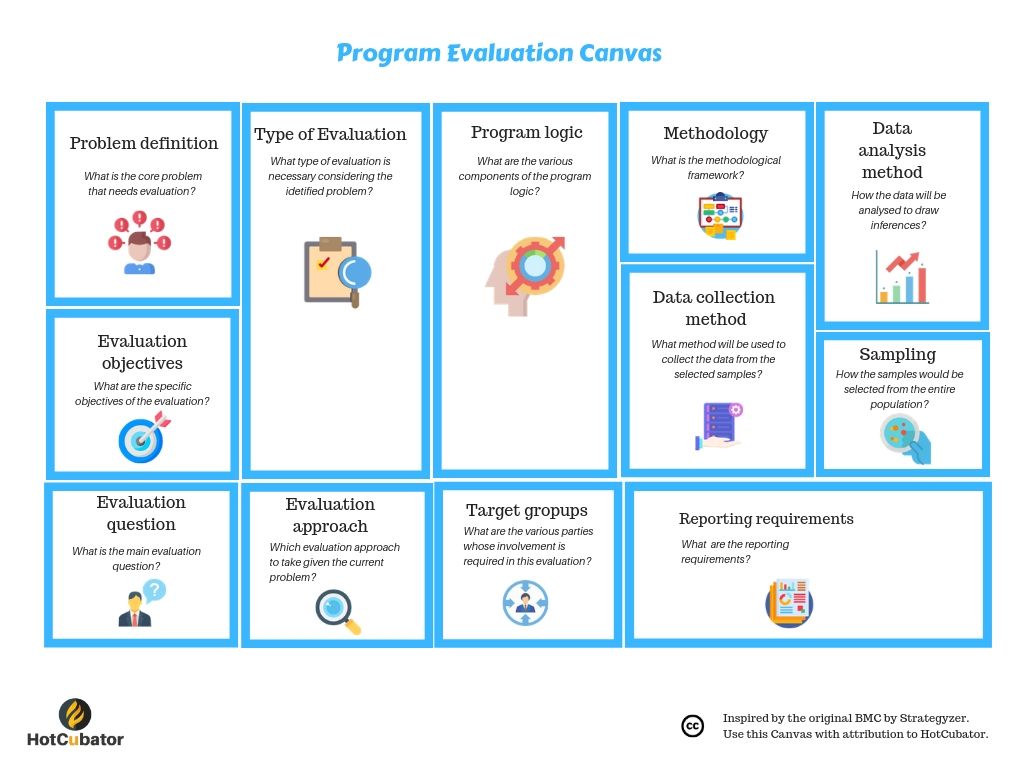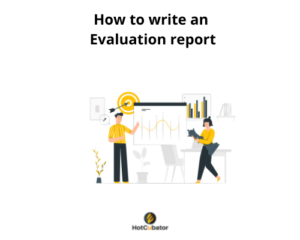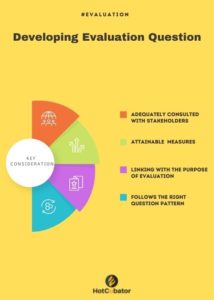
Too often program evaluation starts without having a broad and clear picture of the various aspects of an evaluation project. A program evaluation involves a series of stages which are all interrelated and contingent on many variables. As such, it is very important at the beginning to have a clear picture of the overall evaluation approach by linking together the various interrelated variables. This involves a series of decision making and choosing among alternatives.
A business model canvas coined by Alexander Osterwalder, co-founder of Strategyzer is a popular tool used to map out the overall value proposition of a business at a glance, rather than creating a lengthy business plan. The benefits of a business plan canvas is that, it is short, but succinct and summarises every aspect of a business providing an insight-out perspective.
Using the almost similar philosophy, we have created a program evaluation canvas which can be used to visually illustrate the various aspects of an evaluation. The program evaluation canvas has been tested with vetted experts while undertaking both small and large scale evaluation projects.
The various aspects of the program evaluation canvas include –
Problem definition – At the very beginning of any evaluation project, the most important part is to develop a clear and articulate problem definition which succinctly puts forth the problem.
Evaluation question – It is really beneficial to summarise the evaluation question into one simple sentence.
Define the target groups – Every evaluation project will require the involvement of multiple stakeholders which include –
– Those who will read the evaluation report
– Those who will undertake the evaluation
– Those who will provide the data/information
Evaluation approach – There are various evaluations approaches which are contingent on a range of different factors which include but are not limited to – stage of the program/project, focus of the program, epistemological belief of the evaluator, reporting requirements.
Type of Evaluation – Broadly, all of the evaluations are divided into three categories which are – process, impact and economic evaluation.
Logic model – A program logic or logic model is a visual representation of the hypothetical relationship among the various factors and their cause and effect relationships. Typically, a program logic is created after the problems definition and evaluation objectives have been established.
Evaluation methodology – The evaluation methodology is determined by the epistemological belief of the evaluator.
Population and sample – How the sample will be selected from the broader population who have information on this evaluation.
Data Collection Method – The textual data or numeric data can be collected in various ways depending on the evaluation methodology.
Data analysis method – Once all the data have been gathered, then the next important task is to determine the type of data analysis approach to be considered.






